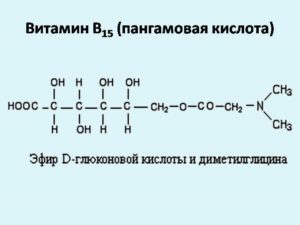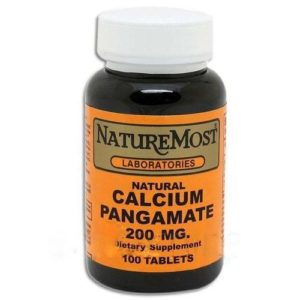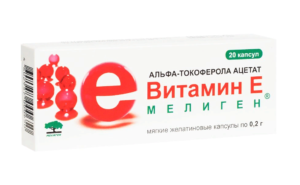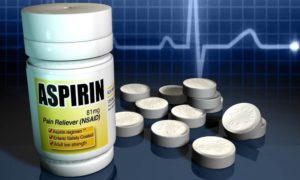Content
Pangamic acid is classified as a water-soluble vitamin-like substance. Vitamin B15 is needed by the body for its beneficial effects. The component regulates tissue respiration, cholesterol levels, and creatine synthesis. Regular intake of the substance allows you to remove toxins, which are products of poisoning.
What is Pangamic Acid (Vitamin B15)
Pangamic acid or vitamin B15 is a white crystalline powder that can absorb liquid. The discovery of the vitamin took place in the middle of the 20th century when studying bovine liver. Somewhat later, scientists learned about the presence of pangamic acid in rice sprouts, apricot kernels and brewer's yeast.
The formula for pangamic acid is as follows:

The acid got its name due to the content of various plants in the seeds ("pan" and "gami" are translated from Greek as everything and seed). Experts emphasize that pangamic acid is a vitamin-like compound. Lack of vitamin B15 is not capable of causing serious pathologies in the human body.
What does the body need vitamin B15 for?
Pangamic acid increases the resistance of human tissues to oxygen deficiency. Adequate intake of vitamin B15 increases the tone and also inhibits the process of dying of cellular elements.
Pangamic acid is an adaptogen and antioxidant. Its importance for the functioning of the body is due to the following properties:
- improved blood circulation in the limbs;
- increased contractility of the heart muscle;
- lowering blood cholesterol levels, which prevents stroke, heart attack and atherosclerosis;
- participation in the hormonal synthesis of the thyroid gland;
- prevention of hepatosis;
- activation of oxygen absorption by cellular elements;
- regulation of amino acid synthesis;
- improving liver function, fat metabolism;
- stimulation of protein synthesis.
Regular intake of vitamin B15 in the body provides:
- acceleration of muscle regeneration after injury;
- improving the functioning of the adrenal glands;
- normalization of protein, mineral and lipid metabolism;
- elimination of oxygen starvation of the brain;
- getting rid of the hangover syndrome;
- prolongation of the vital activity of cellular elements;
- participation in the production of RNA and DNA;
- strengthening muscle fibers;
- elimination of toxins in case of poisoning;
- weakening of vascular spasms;
- increased concentration of glycogen in the liver;
- prevention of hypoxia;
- lowering pressure due to the vasodilating effect;
- stimulation of the immune system due to anti-inflammatory properties;
- optimization of energy processes.
Lack of vitamin B15 in the body can provoke the following symptoms:
- joint pain;
- weakening of muscles;
- impaired liver function;
- numbness of the face and fingers;
- oxygen starvation of the heart;
- early appearance of signs of aging;
- decreased production of sex hormones;
- insomnia;
- deterioration in concentration;
- nervousness, depression;
- vascular and heart diseases.
An increase in the need for vitamin B15 is observed in adolescence, with intense physical exertion.Pangamic acid deficiency is often diagnosed in people who abuse alcohol and take certain drugs.
Where is vitamin B15 found
Vitamin B15 is found in food. Its maximum amount is found in the seeds of various plants. To enrich the body with vitamin B15, it is recommended to consume:
- seeds: watermelon, sunflower, sesame, pumpkin;
- legumes;
- porridge: barley, oatmeal, buckwheat;
- Brewer's yeast;
- poultry or beef liver.
Indications for the use of preparations with vitamin B15
Pangamic acid is recommended to be taken as part of complex therapy for the following pathologies:
- rheumatism;
- hepatitis;
- cirrhosis (not started);
- atherosclerosis;
- alcoholic, drug poisoning;
- emphysema;
- pneumosclerosis;
- bronchial asthma;
- chronic coronary insufficiency;
- itchy skin, psoriasis, eczema, dermatitis;
- sclerosis affecting the vessels of the brain;
- syphilitic aortitis.
Contraindications and side effects
The substance is not prescribed during pregnancy due to the lack of data on its safety. Pangamic acid passes into breast milk. That is why during lactation, preparations containing the component are not recommended to be taken. The optimal source of intake of a vitamin-like substance is food.
Studies have shown no toxic effects of pangamic acid. Drugs are not prescribed for hypersensitivity reactions, hypotension or hypertension, glaucoma, heart failure.
The use of calcium pangamate rarely leads to adverse reactions. With increased sensitivity to active and auxiliary components, the following symptoms may occur:
- headache;
- tachycardia;
- dizziness;
- weakness;
- nausea;
- increased sweating;
- tremor of the limbs;
- darkening in the eyes.

Instructions for the use of vitamin B15
According to the instructions for use, pangamic acid can be taken in parallel with the following drugs:
- corticosteroid;
- sulfanilamide;
- anti-tuberculosis.
The intake of vitamin B15 is 2 mg per day. A balanced diet usually provides an adequate intake of pangamic acid. Experts recommend combining vitamin B15 with tocopherol and retinol. In the absence of disturbances from the work of the digestive system, liver, the use of preparations containing pangamic acid is usually not required.
If there is a lack of a component, drugs can be used. Vitamin B15 is released as calcium pangamate (Calgam). The substance is rapidly destroyed under the influence of ultraviolet radiation and oxygen.
The dosage of the drug is 1 or 2 tablets, taken three times a day. The maximum dose (daily) does not exceed 300 mg. Calcium pangamat is taken either one hour before a meal, or 4 hours after a meal.
The duration of admission varies and implies 25-40 days. After a therapeutic course, taking the drug can be resumed after 2 months.
It is possible to take pangamic acid together with other drugs:
- Retinol and tocopherol... On the background of the application, an improvement in metabolism is noted.

- AT 12... The complex is prescribed to normalize cellular biochemical processes.

- Aspirin... Simultaneous reception allows you to minimize the negative effects on the stomach and kidneys.

Vitamin B15 is used to cleanse the body after poisoning with sulfanilamide and tetracycline antibiotics.
Conclusion
Vitamin B15 is needed by the body due to participation in various oxidative processes, stimulation of the production of adrenal hormones.Vitamin-like substance protects the liver from cirrhosis and fibrosis, regulates the functioning of many organs and systems.

